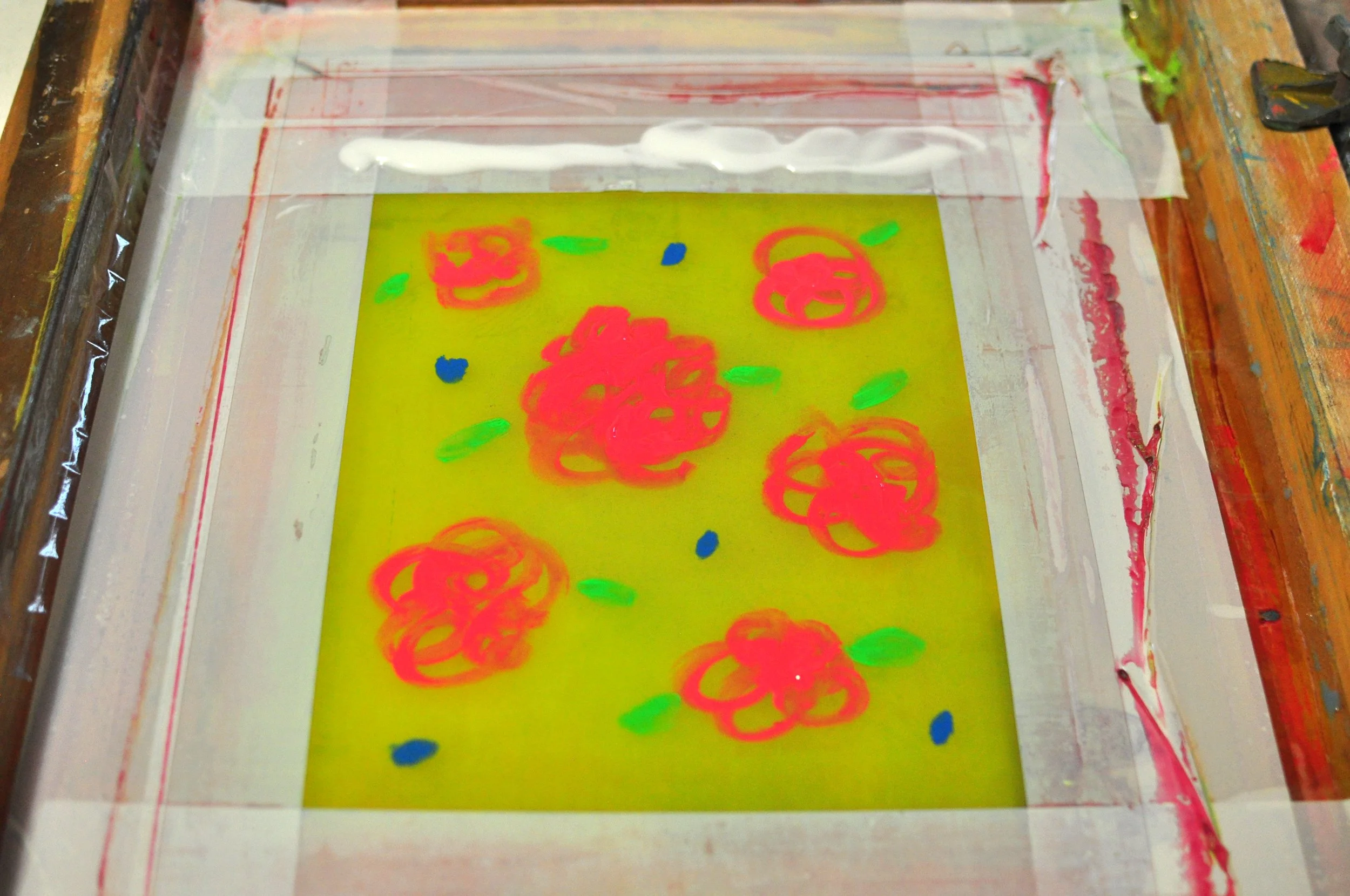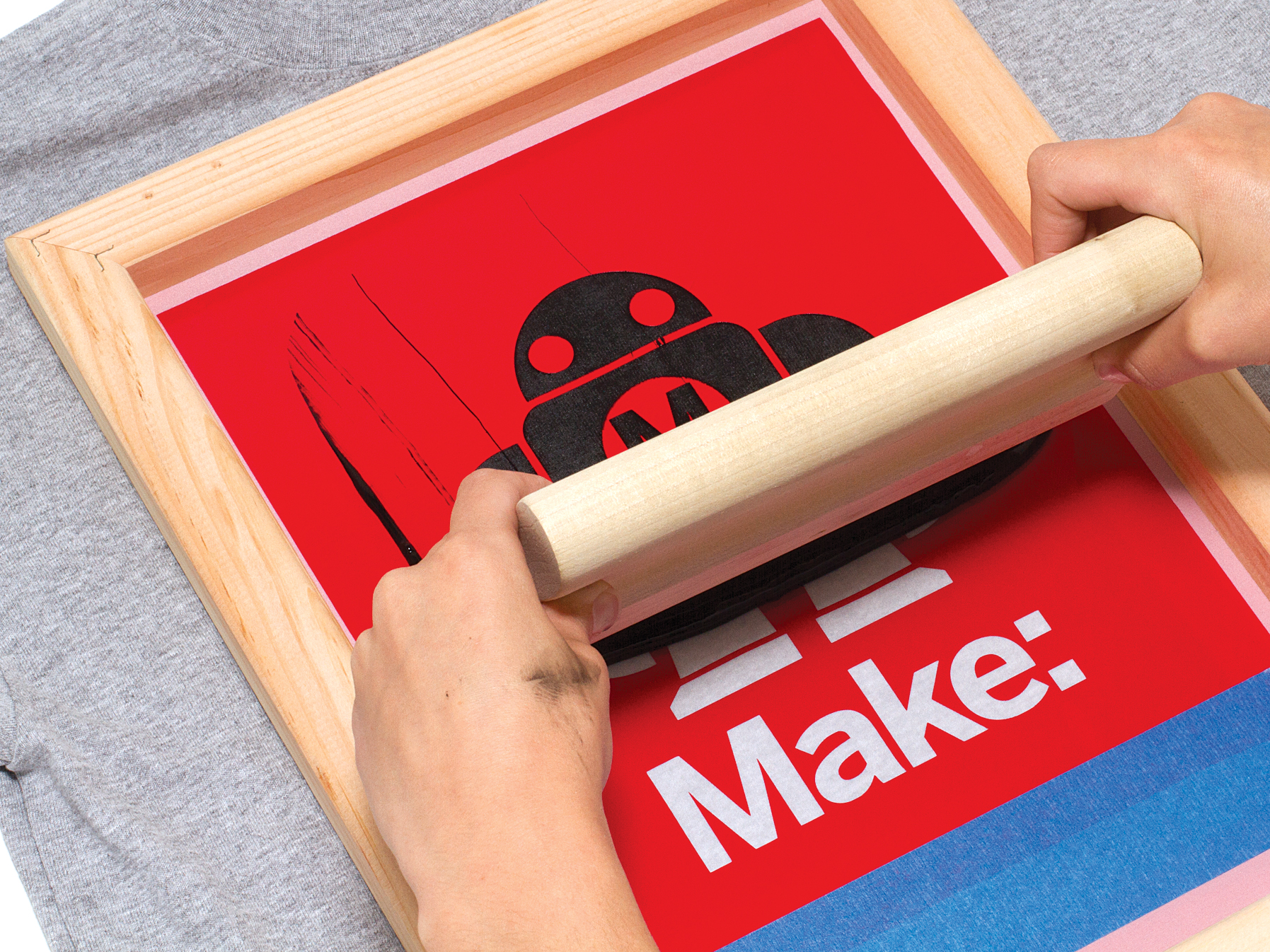Discover the Numerous Kinds Of Screen Printing Techniques for Your Following Job
Screen printing supplies a diverse variety of techniques that can improve any kind of innovative task. From standard methods like serigraphy to contemporary innovations such as direct-to-garment printing, each approach has its distinct benefits. Specialty options, including metal and environmentally friendly inks, introduce much more possibilities. Understanding these methods can substantially affect the final result. Nevertheless, the challenge hinges on choosing one of the most suitable method for specific requirements and wanted results. What factors should one take into consideration?

The Essentials of Screen Printing
Screen printing may seem complex, it is basically a simple procedure that involves transferring ink via a mesh screen onto various surfaces. The method begins with the development of a pattern, which defines the design to be published. This pattern is connected to a mesh screen, commonly constructed from polyester or nylon. When the pattern remains in location, ink is related to the screen and pushed through the mesh utilizing a squeegee, resulting in the desired pattern being published on the underlying product.
Screen printing can be carried out on a wide array of substrates, consisting of paper, fabric, and plastic, making it a versatile option for different projects. The process enables complex designs and vibrant shades, making it prominent in markets such as advertising and marketing, art, and style. Recognizing these essentials equips individuals with the foundational knowledge called for to discover more innovative methods in screen printing.
Typical Screen Printing Techniques
Conventional screen printing methods have actually been employed for centuries, maintaining the workmanship and virtuosity of this technique. This approach utilizes a mesh screen to move ink onto a substrate, such as fabric or paper, permitting vivid and resilient styles. The process begins with creating a pattern, which obstructs specific locations of the screen to manage where the ink will certainly be used.
One popular method is serigraphy, usually utilized for creative prints and restricted versions. An additional is using water-based inks, which are green and supply a soft feeling on textiles - 10:9 Design Abilene. Additionally, standard techniques can include hands-on printing, where artisans apply ink with a squeegee, making sure accuracy and interest to detail
These techniques continue to be valued in the sector for their tactile high quality and the unique structures they produce, appealing to both consumers and creators that appreciate the heritage of screen printing.
Digital Screen Printing Innovations
As the demand for faster production and modification in the printing industry has surged, electronic screen printing innovations have actually become a game-changer. This technology blends standard screen printing methods with electronic processes, enabling quick prototyping and intricate layouts that were previously hard to achieve. One considerable development is the introduction of direct-to-garment (DTG) printing, which facilitates top notch, full-color prints on different textiles without the need for screens. Furthermore, developments in ink formulas have actually resulted in eco-friendly alternatives that preserve dynamic shades while reducing ecological influence. The use of automated systems even more improves manufacturing, lowering labor costs and enhancing precision. These advancements not only deal with small set orders and individualized styles however likewise permit quicker turn-around times, making them optimal for companies concentrated on conference consumer demands in a hectic market. Digital screen printing, consequently, stands for an important advancement in the domain name of printing strategies.
Specialized Screen Printing Techniques
Checking out specialty screen printing methods discloses a diverse selection of strategies that push the boundaries of creative thinking and performance in the printing industry. Amongst these, glow-in-the-dark inks supply a special aesthetic effect, making layouts come to life in low-light conditions. Metallic inks, recognized for their sparkling surface, add a touch of deluxe to published products. One more innovative approach is discharge printing, which gets rid of dye from the fabric as opposed to adding ink, resulting in a soft, classic feel. High-density printing produces an elevated appearance on the surface, boosting responsive involvement. In addition, water-based inks are acquiring popularity for their dynamic colors and reduced environmental effect. Each of these specialized techniques provides to particular layout needs, making it possible for brands and artists to create standout items that resonate with their target markets. By leveraging these methods, companies can elevate their screen printing jobs to brand-new heights, making sure memorable impacts.
Eco-Friendly Screen Printing Options
Environmentally friendly screen printing options are obtaining traction as the sector changes in the direction of sustainability. Lasting ink choices and the use of naturally degradable products are crucial components in reducing the ecological impact of the printing procedure. By embracing these practices, screen printers can add to a much more lasting future while keeping high-grade outcomes.
Sustainable Ink Choices

Biodegradable Materials Use
As the screen printing sector evolves, the unification of eco-friendly products is ending up being increasingly vital for ecologically conscious methods. Producers and try here designers are currently discovering inks and substratums made from all-natural, renewable energies that decay more successfully than traditional equivalents. These eco-friendly options lower plastic waste and lessen ecological effect, lining up with the expanding need for lasting products.
Typical examples consist of water-based inks and organic cotton fabrics, both of which decrease damaging chemicals and advertise eco-friendliness. Brands that embrace these materials frequently enhance their market allure, bring in consumers who prioritize sustainability. As awareness of environmental concerns remains to climb, the shift towards biodegradable materials in screen printing is likely to gain energy, promoting a greener market requirement.
Choosing the Right Strategy for Your Job
How can one figure out the most ideal screen printing technique for a particular project? The decision depends upon numerous factors, including the material to be published on, the complexity visit of the style, and the preferred manufacturing volume - 10:9 Design Abilene. For example, direct-to-garment printing is excellent for detailed layouts with various shades, while typical screen printing succeeds for larger runs of simpler graphics
In addition, consideration of the end-use of the published product is crucial. For outdoor applications, strategies that provide durability and weather condition resistance, such as plastisol ink, may be liked. Conversely, environmentally-conscious projects may benefit from eco-friendly products or water-based inks.
Ultimately, comprehending the task's unique requirements enables an informed choice, ensuring both aesthetic appeal and practical long life. By evaluating layout intricacy, product compatibility, and production range, one can properly choose one of the most suitable screen printing method to meet their task's goals.
Regularly Asked Inquiries
What Is the Background of Screen Printing?
Screen printing stemmed in old China around 1000 AD, progressing with Japan and Europe. By the 20th century, it became prominent in commercial art and fashion, changing how styles were produced and dispersed internationally.

Exactly how Do I Prepare Art Work for Screen Printing?
To prepare art work for screen printing, one should assure high resolution, utilize an appropriate color setting, develop separate layers for every shade, and transform message to lays out, guaranteeing compatibility with the printing procedure and preferred end result.
What Products Are Ideal for Screen Printing?
The helpful hints very best products for screen printing consist of top quality inks, durable displays, and appropriate substratums like cotton, polyester, or blends. Additionally, utilizing appropriate solution and mops can enhance the printing process and outcomes.
Can I Screen Publish at Home?
Yes, screen printing at home is possible. With the best products, setup, and techniques, individuals can develop top quality prints. However, cautious consideration of work area and devices is important for successful results.

What Are Common Errors in Screen Printing?
Common errors in screen printing include inappropriate exposure times, insufficient ink uniformity, misalignment of screens, insufficient cleansing of products, and disregarding to evaluate prints. These mistakes can compromise the high quality and accuracy of the final product.
Screen printing may seem facility, it is essentially a straightforward process that includes moving ink via a mesh screen onto various surface areas. As the need for faster production and personalization in the printing sector has risen, electronic screen printing technologies have actually emerged as a game-changer. Discovering specialty screen printing methods reveals a diverse selection of techniques that push the limits of creative thinking and functionality in the printing sector. The ideal products for screen printing include high-grade inks, durable screens, and suitable substrates like cotton, polyester, or blends (10:9 Design Screen Printing Texas). Common errors in screen printing consist of incorrect direct exposure times, inadequate ink uniformity, imbalance of screens, not enough cleansing of products, and overlooking to evaluate prints